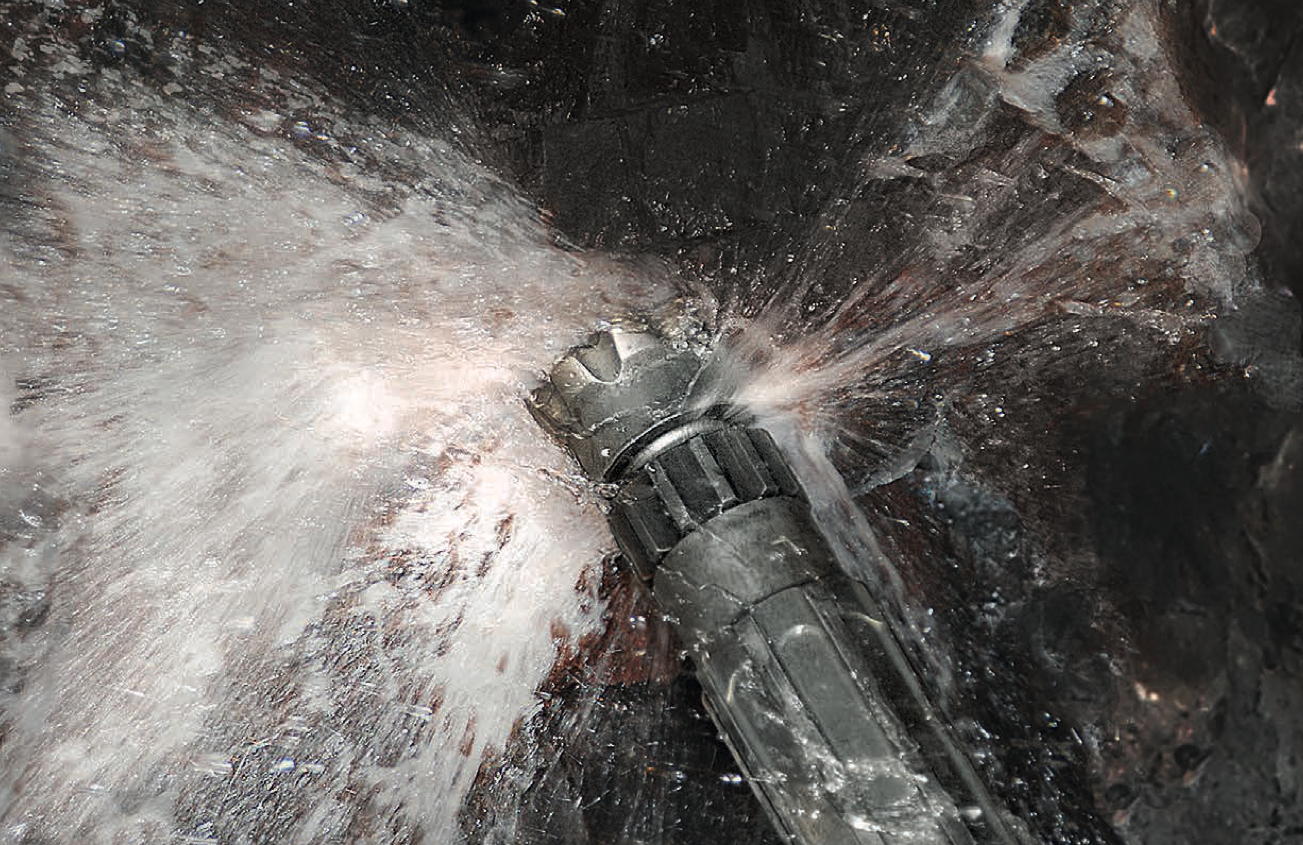The unique Wassara-hammer was initially developed for sub-level caving and can easily increase the length of blast holes way beyond 60 metres.

The LKAB Mining company owns the two largest iron ore underground mines in the world. When they made the transition from a regular top hammer to the unique Wassara-hammer, the length of the blast holes was increased by 100%, from about 28 metres to 56 metres.
This resulted in a decreased number of sub levels by 70% whereas the volume of ore per drilled metre increased by 500%.
Due to the nature of the orientation and shape of a typical ore body that is being mined with sub-level caving, the mine design truly benefits from the advantages of using the Wassara-hammer.
The length of the blast holes can easily be increased to way beyond 60 metres, basically as long as the toe spacing allows. By increasing the length of the blast holes, the amount of sub-levels decreases significantly.
With the increased volume of ore per drilled metre, the overall productivity is significantly increased. Also, the controlled amount of deviation leads to a more homogenous fragmentation which increases the overall throughput of the whole mining process. This is particulary beneficial for large-scale mining methods such as sub-level caving.
Wassara-hammers allows for drilling blast holes. The controlled amount of deviation results in a blast that enables optimal ore recovery, since the risk of getting ore stuck and left behind the dilution in the rock flow is considerably decreased.